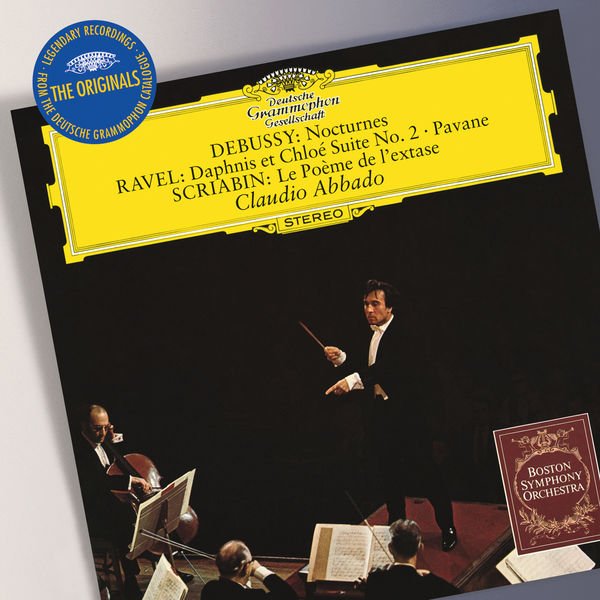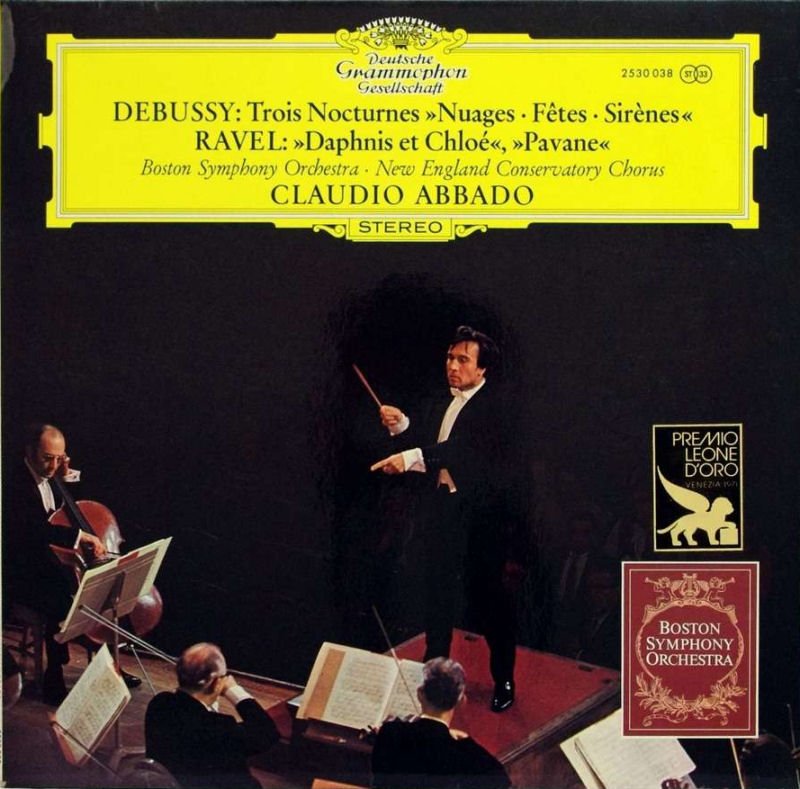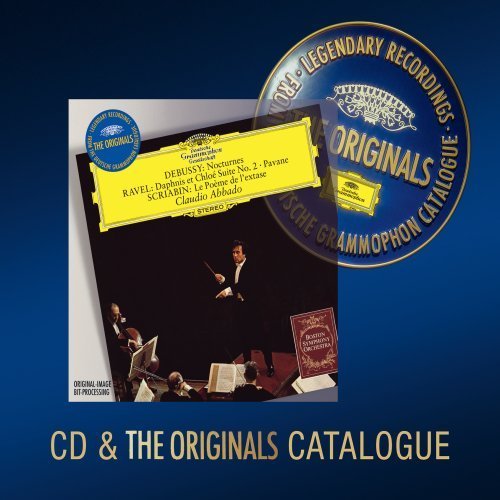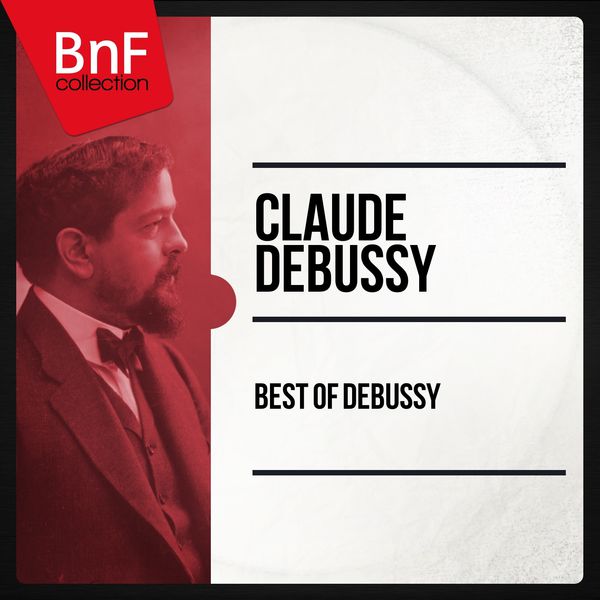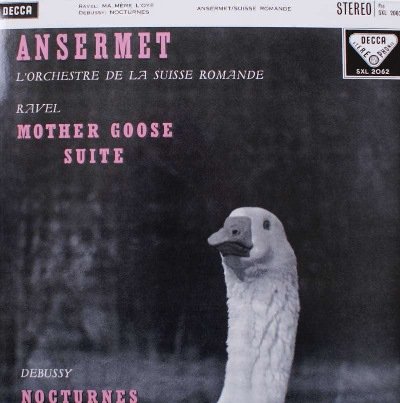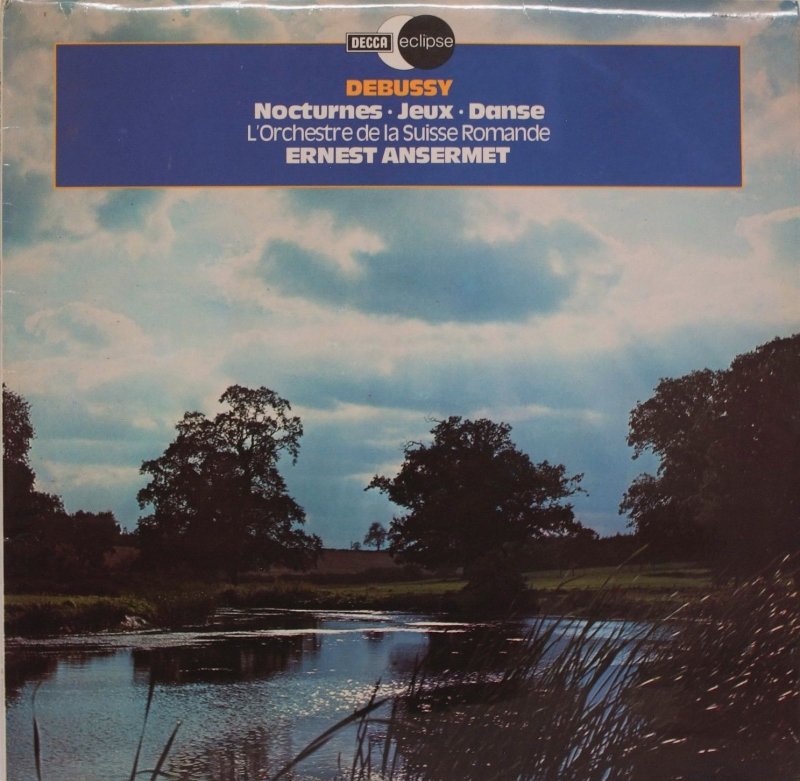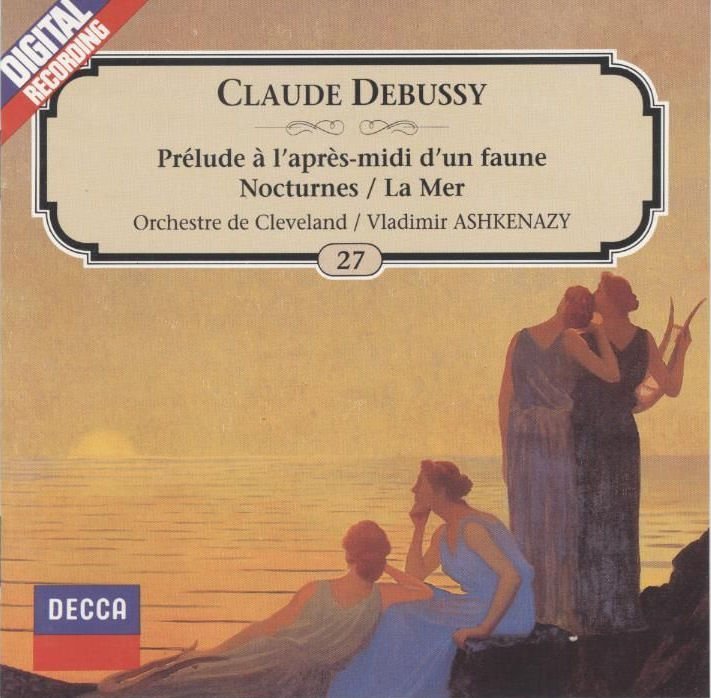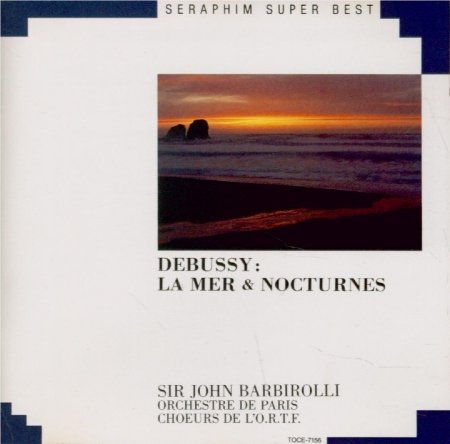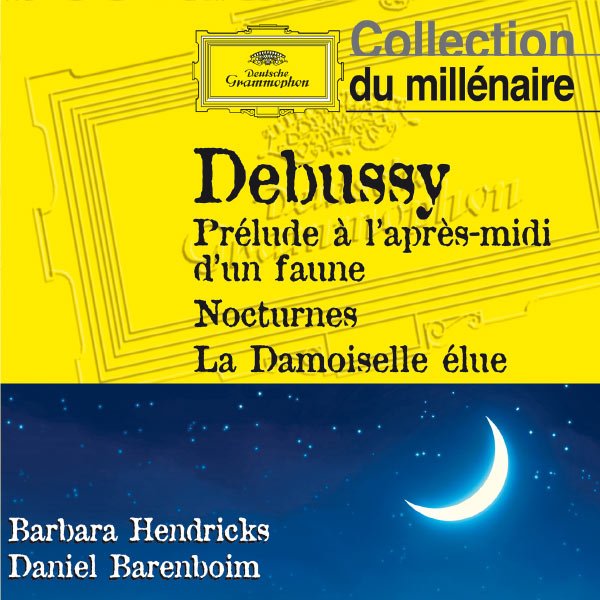Claude Debussy – 3 Nocturnes – Discography
We retained here only the full versions (number of conductors have not registered Sirens because of the presence of the choir) and only those for the studio (except at the end of a Kubelík concert ).
Nuages
First selection with Nuages (approximate recording dates)) :
Leopold Stokowski (1882-1977) – Philadelphia 1929 ? – This is a little bit solicited but sounds like a symbolist lecture. 9
Piero Coppola (1888-1971) – Paris conservatoire – 1938 – Beautiful reading, indications are followed to the letter. 7,5
Stokowski – Stokowski orchestra – 1939 – Sound is very reworked many, mood changes, small breaks that allow to avoid uniformity birthplace of boredom … We feel that Golaud is waiting us in the woods! 9
Hans Rosbaud (1895-1962) – Cologne – 1955 – Good start, despite the strings “sandpaper”. It lacks a bit of entertainment, but it’s endearing. 7,5
Stokowski – London symphony – 1957 – Sound is a little distant, it is slower and less dramatized than his previous versions, more atmospheric and less alive. 8
Pierre Monteux (1875-1964) – Boston – 1958 – So many recordings late 50s early 60s … Tempo fairly unchanging, it lacks of color despite the beauty of the orchestra. 7,5
Constantin Silvestri (1913-1969) – Société des concerts du conservatoire – 1958 – It’s slow but there is a real interpretation, poetic. 8,5
Edouard van Beinum (1900-1959) – Concertgebouw – 1958 – Very nice orchestra sounds melted, but nothing happens. 7
Ernest Ansermet (1883-1969) – Suisse romande – 1958 – Very clear sound, animation in the phrasing, breathing, too much harp, but one of the best versions to date. 9
Manuel Rosenthal (1904-2003) – ORTF – 1959 – Live, pretty lively, not the most beautiful finished instrumental. 8
Jean Fournet (1913-2008) – Société des concerts du conservatoire – 1959 -It’s a bit all at once, a little boring. 7
Paul Paray (1886-1979) – Detroit – 1961 -More light-hearted, but very halftone, beautiful instrumental balance, but we are not really concerned. 7
Carlo Maria Giulini (1914-2005) – Philharmonia – 1963
Great sound with strings, shapely phrases, breathing, beautiful. 9,5
Jean Fournet (1913-2008) – Czech Philharmonic – 1964
Very warm instruments, respect for indications, beautiful atmospheres. 8,5
Eugene Ormandy (1899-1985) – Philadelphie – 1965 – Very slow, lack of tension in the conduct of the work, a shame because the orchestra is superb. 6,5
Pierre Boulez (1925*) – Philharmonia – 1971 – Very fast at first, a little emaciated strings of any sound is elegant but fairly bland. 7
Jean Martinon (1910-1976) – ORTF – 1974 – A little slow, lack of entertainment, everything seems asleep. Orchestral finished well above Rosenthal with the same orchestra, but we get bored disappointment. 6,5
Antal Dorati – (1906-1988) – Washington – 1976 – Not very interesting… 6,5
Daniel Barenboim (1942*) – Paris – 1978 – Very slow, obviously lacks animation at first, but it creates an engaging atmosphere, more Turner than Boecklin. 8
Bernard Haitink (1929*) – Concertgebouw – 1980 – A little on tiptoe (strings), marine atmosphere, magnificent orchestra. 8,5
Alain Lombard (1940*) – Strasbourg – 1981 – Slow, but it is built, a lot of atmosphere, superb.8,5
André Previn (1929*) – London symphony – 1984 – Distant sound, it’s a little flat, beautiful orchestra, but inaudible harp. 7
Michel Plasson (1933*) – Toulouse – 1988 -Certainly, the work, fairly accessible to all points of view, has inspired the French regional orchestras… Here, it’s quite fragile, with an orchestral balance somewhat indefinite, little guideline. 6
Charles Dutoit (1936*) – Montréal – 1990 – We look for a common thread, it’s pretty outside. 6,5
Georg Solti (1912-1997) – Chicago – 1992 -It starts badly: nothing absolutely happens, it ends badly: still nothing had happened… 5,5
Louis de Froment (1921-1994) – Luxembourg – 1992 (?) – Strings a bit provincial, it lacks oomph. 6,5
Esa Pekka Salonen (1958*) – Los Angeles – 1994 – Evanescent, kind of a Nordic walking in the fog. 6
Lorin Maazel (1930-2014) – Vienne – 1999 – Nice start, after it is a bit outside, a little loose too. 7
Pierre Boulez – Cleveland – 2000 – Fast tempo, sound 4D as horrible as usual without tones, very elegant, beautiful set up, but it’s really not relevant. 7
Geoffrey Simon (1946*) – Philharmonia – 2000 – Slow tempo, correct, but it seems that this is the score that guides the conductor rather than himself illuminating it. 6,5
Claudio Abbado (1933-2014) – Berlin – 2001 – It’s lively, beautifully made, but a little outside because of the tempo. 7,5
Max Pommer (1936*) – Leipzig Radio – 2003 – No definition, no interpretation either. 5,5
Jun Märkl (1959*) – Lyon – 2009 – A beautiful interpretation, it is built, atmosphere, a little more freedom, it would have been perfect. 8
Djansug Kakhidze (1935*) – Tbilisi – 2011 – Expressionist vision … but very much alive, a chef. 8
Ievgueni Svetlanov – (1928-2002) – Philharmonia – ? – We have not managed to get the ear of the version in Russia. Distant sound, it is “weathered”, led from start to finish. 8
Emmanuel Krivine (1947*) – Luxembourg – 2013 – Taking lacks of dynamics, we would like more present strings, it sounds a little d’Indy, great atmosphere, but a bit outside (on purpose-it seems). 7,5
Rafael Kubelik (1914-1996) – Cologne – Live – 1966 – It’s hot, full of events, symbolist, higher artistry… So I put it on line.
Fêtes
15 versions left, 3 by Stoko.
Leopold Stokowski – Philadelphia 1929 ? Distorted sound, not necessarily very fair, very fast, the procession is a bit clumsy. 7,5
Stokowski – Stokowski orchestra – 1939 – Some exaggerations, but it is quite dazzling, gender Dukas (The Sorcerer’s Apprentice 1897). At the beginning of the procession, trumpets are miles away…. 9
Stokowski – London symphony – 1957 – More moderate tempo, sound a little distant, many violins in the procession. 8
Constantin Silvestri – Société des concerts du conservatoire – 1958 – It’s lighter, very French woodwinds, but the first part is a bit flat. No effect on muted brass, but then it doesn’t sound much. 7
Ernest Ansermet – Suisse romande – 1958 – It’s light, stressed, very lyrical, the first part is cleverly chosen in anticipation of the procession. The Fanfare lacks a little bit of punch, the end sounds a little spanish. 8
Manuel Rosenthal – ORTF – 1959 – Very fast first part, slower procession rather so so. 7
Carlo Maria Giulini – Philharmonia – 1963 – Fast, tight, yet we hear all the details, a climax with more brass, it was perfect. 9
Jean Fournet – Czech Philharmonic – 1964 – This is less alive, lack of entertainment, brass not very clear. 7
Daniel Barenboim – Paris – 1978 – Quite lively first part, very well led procession (brass attacking a little below which gives the effect), it just lacks a little relief, beautiful finish. 8
Bernard Haitink – Concertgebouw – 1980 – First part well animated, procession beautifully proportioned, it lacks a little of treble and a more festive side, but it is superb. 8,5
Alain Lombard – Strasbourg – 1981 – Singing phrases, lacking in animation. Procession slightly below. 7,5
Jun Märkl – Lyon – 2009 – Beautiful ideas of relief, but a few holes, steep procession. 7
Djansug Kakhidze – Tbilisi – 2011 -Sound too far away, yet few beautiful moments. 7
Ievgueni Svetlanov – Philharmonia – ? – First part well done procession with brass this time… 7,5
Rafael Kubelik – Cologne – Live – 1966 – Tempo going on, this the more dancing, fast procession, thus keeping a dancing side. superb and. 9
Sirènes
I still have 7 versions – The 3rd movement is the least interesting of the three, I should have stayed on the first 2 and therefore invite and Furt, Toscanini, Munch…
Stokowski – Stokowski orchestra – 1939 -It’s very free, stressed, maritime at will, important choir, the slowest tempo with Giulini, masterly. 9
Stokowski – London symphony – 1957 – It’s a bit distant, more distanced, more melted, slightly sounds like Escales. 8
Ernest Ansermet – Suisse romande – 1958 – Faster, sounding, superb. 9
Manuel Rosenthal – ORTF – 1959 – It’s fast, animated, not the most beautiful choir. 8
Carlo Maria Giulini – Philharmonia – 1963 -Therefore very slow, a little too laid, but addictive. 8,5
Daniel Barenboim – Paris – 1978 – A little remote but well built. 8
Bernard Haitink – Concertgebouw – 1980 – The version that best treats the female choir as an instrumental ensemble as well as the others. The most convincing version. 9
Rafael Kubelik – Cologne – Live – 1966 – This is to the level of the best, with a chorus incorporated as for haitink and the same evidence as Ansermet for example.
Conclusion
Choice: Stokowski 1939, Giulini, Haitink or Ansermet: no surprises this time…




